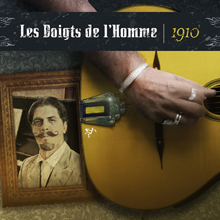Home » Jazz Articles » Live Review » Rich Perry: Nyack, NY, July 24, 2011
Rich Perry: Nyack, NY, July 24, 2011
Olive's
Nyack, NY
July 24, 2011
The opening night of Nyack Jazz Week 2011, an annual event which encompassed a variety of acts and venues, kicked off at Olive's with a set by tenor saxophonist Rich Perry. Best known for his tenure with the Vanguard Jazz Orchestra and the Maria Schneider Jazz Orchestra, Perry's live dates as a leader are few and far between.
Eighteen recordings on the SteepleChase label testify to Perry's qualities as an improviser and interpreter of American popular songs. The SteepleChase sessions, particularly several that include pianist Harold Danko, bassist Jay Anderson, and drummer Jeff Hirshfield, constitute a body of work equal to anyone currently in the jazz mainstream. Perry's editing, shifts in tone and phrasing, and embellishments of songs like "Gone With The Wind" on Gone (SteepleChase, 2009) evince a genuine appreciation of the melodies, as well as a desire to make his own way through them. There's always a close connection between the heads and the solos that follow. As an improviser, Perry has a knack for blowing hot and cool at the same time, eschewing drama and big climaxes in favor of continuous, logical, incremental development, sometimes over the course of several minutes. There's a great deal of movement during the course of every solo, and he's a master of melding direct swinging and circuitous lines.
At the beginning of "In Your Own Sweet Way," the set's opening selection, a trio led by the venerable bassist Cameron Brown, which included Gary Versace on electric piano and the drums of Anthony Pinciotti, demonstrated a swinging, flexible support not unlike Danko, Anderson, and Hirshfield. After finding an indirect route through Dave Brubeck's melody, Perry commenced a solo without any fanfare. His full, weighty tone never turned harsh or strident. Taking Pinciotti's provocative snare drum hits in stride, he changed dynamics and found some of his own melodies on the bridge. Chorus after chorus of smartly developed lines betrayed no signs of strain.
Perry's ability to function with the rhythm section instead of simply bowling over them was apparent throughout "You And The Night And The Music." Despite the ways in which he pushed and pulled against the pulse, Perry's designs always displayed a healthy respect for Brown's firm walking bass line. Variations in tone—burly to lighter than air—and use of space—from measures without a sound, to notes spilling out of the horn—were all integrated into a stable presentation. One member of the audience screamed his approval in the middle of the numerous blues choruses on "Sonnymoon For Two," and another simply laughed at the thrill of it all. Amidst the band's tight support, Perry emitted broad foghorn tones, repeated a two-note phrase that sounded like someone digging with a shovel, and reached for banshee wails.
Versace, too, had his share of highlights. During "How Deep Is The Ocean," a flurry of chords and singles gradually congealed into a rough bossa nova feel. Every note seemed to stick like glue to Brown's and Pinciotti's ebullient pulse. A brief turn on "Wee" included a number of jabbing single notes followed by one note held for a few beats, phrases that swung hard and dug into the bass and drums, some brief unison lines, and chords that rang like chimes.
After an hour or so of addressing the audience with his horn, Perry tried his hand at acting as a master of ceremonies. In a few seconds, the microphone went dead. Undaunted by the mechanical failure, he quickly left the stage in good cheer. Still buzzing with excitement after the set's end, the capacity crowd didn't seem to mind. Perry and Brown's trio had put on an exceptional show. In the end, no further explanation was necessary.
Tags
Rich Perry
Live Reviews
David A. Orthmann
Jim Eigo, Jazz Promo Services
United States
New York
New York City
Vanguard Jazz Orchestra
Maria Schneider
Harold Danko
Jay Anderson
Jeff Hirshfield
Cameron Brown
Gary Versace
Anthony Pinciotti
Dave Brubeck
PREVIOUS / NEXT
Rich Perry Concerts
Support All About Jazz
 All About Jazz has been a pillar of jazz since 1995, championing it as an art form and, more importantly, supporting the musicians who make it. Our enduring commitment has made "AAJ" one of the most culturally important websites of its kind, read by hundreds of thousands of fans, musicians and industry figures every month.
All About Jazz has been a pillar of jazz since 1995, championing it as an art form and, more importantly, supporting the musicians who make it. Our enduring commitment has made "AAJ" one of the most culturally important websites of its kind, read by hundreds of thousands of fans, musicians and industry figures every month.























